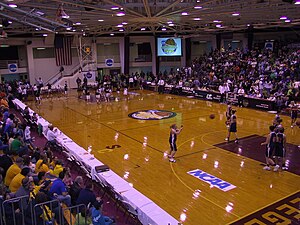The Importance of Primary and Secondary Offensive Transition

Offensive transition has a special place in most coach’s hearts. For many coaches offensive transition is one of the first offences they ever run and if you started in the junior ranks of coaching then the transition offence would have been the most frequent offense your team utilised.
Transition offense is the phase in play when your team is moving from their defensive third of the floor to the offensive end. Transition offense is different to a fast break; in it is a planned and deliberate structure with all players having assigned roles, not just filling positions of spontaneous opportunity which is the case with fast break scenarios.
Transition offense can be broken into two distinct areas. The first is called the primary transition. The primary transition provides each player in your team with a specific role. This is often focused around their playing position or breaks the players into guards and forwards for more flexibility. By only providing two specific roles (guards or forwards) the transition offense becomes that much easier to conduct as multiple players can fill the various roles needed when moving up the floor, rather than each specific player having to move into a pre-determined area.
The primary transition will provide your team with a map to move the ball from the red area of your defensive basket into a scoring position. Your primary transition should allow you to move the ball at pace from one end of the floor to the other. This will be especially important in helping your team to control the tempo of the game and developing our own rhythm in playing. Once your team becomes comfortable with executing the primary transition you will find that this will be the basis for the style of play your team will be comfortable with.
As a tactical aspect your primary transition should revolve around passing the ball up the floor. This will increase the pace of the transition. This will be important when playing against teams utilising zone defences against your team. The early offense created by the primary transition will be especially effective against a zone before it can be set.
Additionally your primary transition should be flexible enough to also be adaptable to situations like if your opposition uses a full court press against you. Looking at this a little further having the ability to adjust your primary transition so it can either move the ball down the sideline or middle lanes will make it that much harder to scout and defend against.
The secondary transition offense is performed in the offensive third of the court for your team. Secondary transition is a way in which team often lead into their half court offenses. Most teams have multiple secondary offenses to create different set-up options for the various plays or sets they intend on running. For examples teams will use different secondary offenses when facing up against a team playing man to man defence, to when their opposition is playing a zone defence.
The secondary transition provides any number of quick hit options in the half court. An effective secondary transition will only require a minimum amount of time to be utilised in providing these scoring opportunities. Secondary transitions can also be used to create mismatches and rotate players into different position then they needed to fill in the primary transition. As an example in the primary transition the Center often has to fill the middle lane as an inside presence. The secondary transition might be used to bring the Five from the interior to the perimeter depending on the players skill set if there is an advantage in their match-up.
Your transition offense should provide your team with a number of positives. The better your transition offense the more benefits it will produce for your team.







Leave a Reply